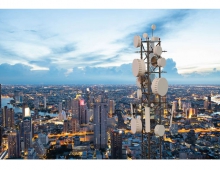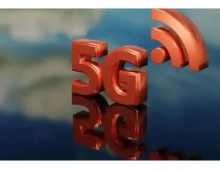
Cisco at MWC Barcelona
In Barcelona, Cisco will be showcasing products and 5G-powered services for service provider and enterprises.
Cisco says that it has had over 100 active engagements with global customers on 5G, with 40 service providers to actively trialing and deploying Cisco 5G Now solutions.
Service providers face significant financing pressures as they prepare for this 5G revolution. Cisco's recent Mobile VNI Forecast shows that by 2022, the average 5G connection (22 GB/month) will generate nearly three times more traffic on the networks than the average 4G connection (8 GB/month). Service providers must expand their networks to support this growth. At the same time, they must invest in new 5G services to stay competitive. Cisco is planning to commit $5 Billion in 5G funding via Cisco financing over the next three years to help its customers' network transitions to 5G.
At MWC 2019, the company will unveil a host of new products and solutions:
Intent-based Networking
Cisco Unified Domain Center: Enables Enterprise IT departments to manage all policies, security, and services from the mobile network. It integrates with Cisco DNA Center, blurring the lines between the WAN, LAN, and mobile networks through a single pane of glass.
Routing
- Cisco NCS 5500 High-density 400G line cards: Enables massive scale to meet the demands of 5G and delivers investment protection for the NCS5500 router family.
- Cisco NCS 560 router: Optimizes high-density converged access and aggregation networks and meets the demands of trusted 5G xHaul, Cable Converged Interconnect network (CIN) and Carrier Ethernet applications.
- Cisco NCS 540 router: Addresses Carrier Ethernet, Cell Site, 5G xHaul and Small Aggregation use cases.
Cloud Native Packet Core
Cisco Ultra Cloud Core with CUPS (control user plane separation): The secure, full-featured packet core platform that unifies 3G/4G/5G/IoT/Wi-Fi connected services.
Automation
- Cisco Crosswork Cloud: A cloud-based service that provides analysis of network data to deliver insights for network operators adds Crosswork Trust Insights which reports on the integrity of devices and delivers forensics for assured inventory.
- Cisco Crosswork SON (Self Organizing Network): Uses machine learning to react faster to network issues, predicting potential issues from the radio to the end-user device based on gathered (and ingested) data.
- Cisco Crosswork User-centric SON: Using subscriber-level analytics to improve network optimization at faster speeds.
- Crosswork Data Gateway: Collects data and telemetry to these cloud services.
- Crosswork Optimization Engine: Real-time analysis and optimization of SDN transport to adapt changing network conditions for optimal performance
- Cisco Network Services Orchestrator 5: Features enhanced tools that accelerate revenue-generating services with automated, self-service, and on-demand provisioning. Supports the largest multi-vendor networks that exceed 100,000 devices.
Security
- Cisco Trusted Platforms: Routers with Cisco IOS XR utilize a hardware root of trust.
- Cisco Umbrella Mobile Protect: Cisco Umbrella and Cisco Ultra-M combine to deliver network-enabled security at scale across all devices and all generations, using Cisco threat intelligence.
Wi-Fi 6
Cisco worked with Samsung to validate that the first Wi-Fi 6 device, the new Galaxy S10, works on Cisco Wi-Fi 6 networks.
5G, Wi-Fi 6 and IoT Demonstrations
- Sustainable Wireless Connectivity: Together with Google Station, Cisco is showcasing how it will work with internet service providers, governments and public venues on a mission to include one billion people in the growth opportunities of the digital economy. The program will provide communities with limited connectivity around the world easily accessible public Wi-Fi.
- 5G, WiFi and Smart Communities: Cisco is demonstrating how 5G and WiFi architectures play critical roles in helping service providers offer managed services to connected communities like the City of Barcelona, enabling them to improve economic sustainability, civic services and city infrastructure.
- 5G Beyond the City: Featuring the 'UK 5G Rural First' project. As one of the key partners with the UK, Cisco will show how it is helping to "connect the unconnected" via 5G in rural locations.
- Wi-Fi 6: Cisco will demonstrate how it is making Wi-Fi 6 even better with new and improved capabilities built on the same foundation as 5G. The new wireless standard can deliver three to four times the throughput of previous standards, sub-millisecond latency, and the ability to support up to 70 devices per 100 square meters.
- Connected Cars: See how Cisco IoT and 5G architectures enable automakers to partner with service providers to deliver new monetizable services around predictive maintenance, improved R&D, data-driven sales and marketing.
Industry Open Standards
Cisco will also highlight its investment and commitment to open, cross-industry innovations including Open ROADM, FD.IO, TIP (XR on white box), and Open vRAN.
SoftBank's Segment Routing IPv6 Deployment
Cisco has been also assisting Japan's SoftBank to deploy Segment Routing IPv6 (SRv6) networks to build a future network architecture that is scalable, with improved reliability, flexibility and agility.
Current mobile networks are deployed as divided networks, with several layers and complicated control plane processing, which makes it difficult to respond to strict quality requirements like in the case of 5G. Deploying SRv6 in a 5G mobile network simplifies network layers and integrates user plane functions from end-to-end with only IPv6 protocol
Cisco Mobile Networking technology powers KT Mobile 5G Packet Core
Cisco is also collaborating with South Korean KT Corp. on the launch of a flexible and automated commercial 5G mobile network platform. Cisco is transitioning KT’s network architecture to better manage upcoming 5G traffic with advanced routing and automation software, intelligent analytics and machine learning.
Cisco and KT rolled out a new 5G mobile network platform with automated and virtualized technologies on Mobile Edge Cloud, featuring Mobile Packet Core, network slicing, segment routing, control and user plane separation (Remote-CUPS) and more.
The new architecturewith Remote-CUPS is designed to serve scalable, flexible and low-latency network services. The virtualized mobile packet platform is designed to remotely manage traffic at scale and accelerates packet processing to meet the requirements of commercial 5G services with high throughput and low-latencynetwork services.
The end-to-end network includes a 5G routing backbonewith Cisco Network Convergence System Router 6000 and ACI on Nexus 9000 switching platformat KT’s distributed data centers. It is designed to manage the increase in 5G traffic by fully automating advanced routing, intelligent analytics and machine learning among its infrastructure, data centers, platform and applications.
Powering Rakuten’s Cloud Native Mobile Network
Cisco also details of its innovation blueprint with Rakuten Mobile Network, Inc. to build an end-to-end fully virtualized, cloud native mobile network, ready for 5G.
Rakuten Mobile Network (RMN), a wholly owned subsidiary of Rakuten, Inc., announced on February 12 it plans to launch commercial services via its new mobile network in October 2019 with a cloud- native architecture that is fully virtualized from radio access to core, with end-to-end automation for both network operations and services.
The foundation of the new Rakuten Mobile Network architecture and telco-cloud will use Cisco software and services, and routing and switching hardware.
Key contributions feature the following:
- Fully virtualized network with a common and distributed telco-cloud with NFVI
- Multi-access edge computing
- 5G-ready system architecture
- 5G enabled IPv6 transport/mobile backhaul
- SDN-enabled centralized and regional data center fabrics for 5G
- End-to-end infrastructure and service automation
Software-defined Networking to Support Veriozon's 5G Mobile Devices for Enterprise
Verizon is expanding its offerings to help enterprises accelerate their digital transformation to support future 5G capabilities. Verizon’s Virtual Network Services will support 5G devices on Cisco’s software-defined wide area network (SD-WAN) platform, making it easier to manage network traffic and application performance across a wide area network on both public and private networks.
SD-WAN technology has become a popular approach to connecting enterprise wide area networks, including branch offices and data centers, over public and private connectivity services. The new offer from Verizon and Cisco sets the stage for enterprises to use Verizon’s future 5G network as an extension of their campus and branch infrastructure and enable more control of the application performance on mobile and IoT devices. Potential use cases include the ability to enable an intelligent security perimeter for mobile workers, ensuring that access to corporate assets are governed by their security posture, with a different slice or policy on per application basis from the users’ devices. IoT devices that sit outside the campus or branch could be managed and secured with the same network and security tools used inside the campus, giving enterprises a unified approach to applying networking and security policy across any environment.





















